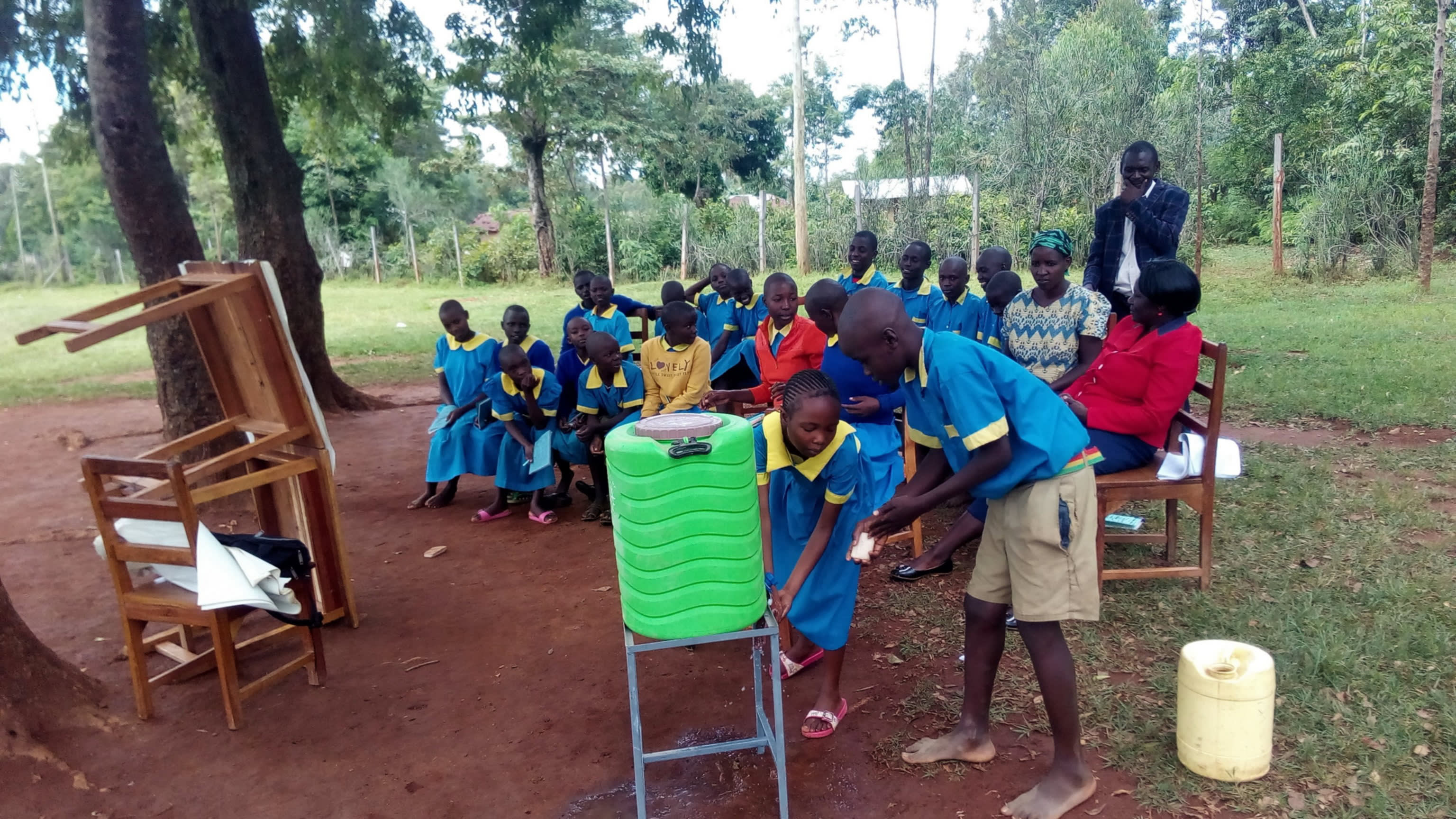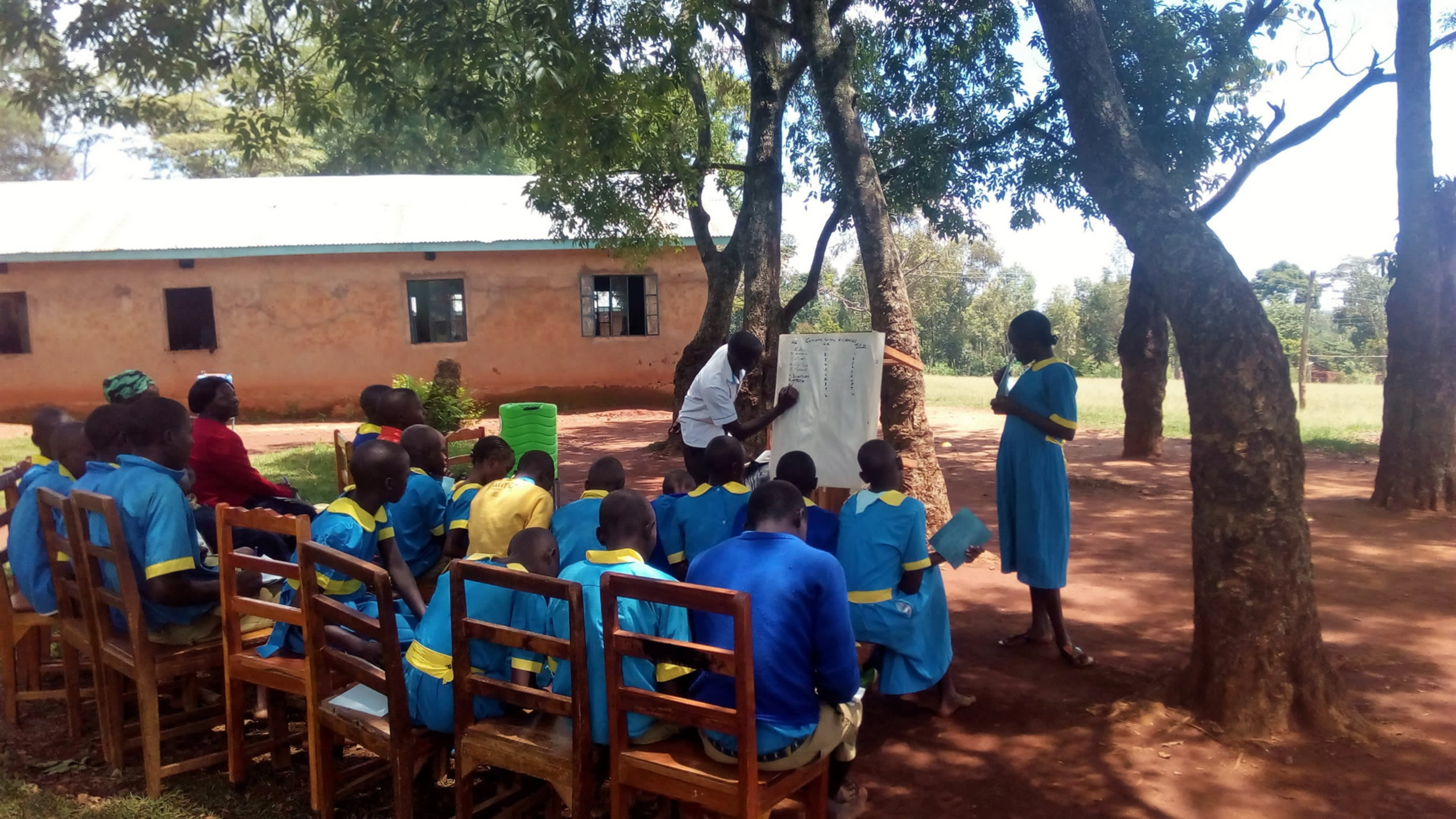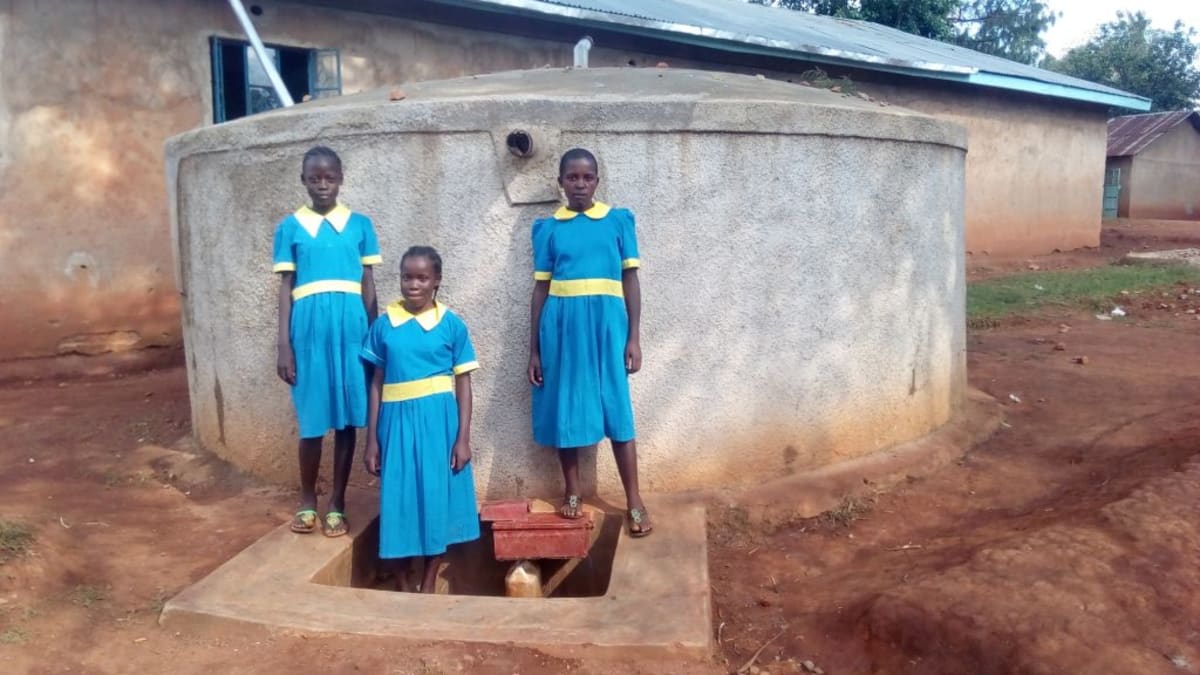This project is a part of our shared program with Western Water And Sanitation Forum (WEWASAFO). Our team is pleased to directly share the below report (edited for clarity, as needed).
Welcome to the School
Ematsuli Primary School was founded in 1948 by community members who donated the land to the school. The school is located at Ematsuli Village, Kenya. The school has a population of 825 students and 21 teachers. The school employs one cook and two security guards.
(Editor's Note: While this many people may have access on any given day, realistically a single water source can only support a population of 350-500 people. This community would be a good candidate for a second project in the future so adequate water is available. To learn more, click here.)
People in this community get up very early in the morning to prepare breakfast, getting their children ready for school and preparing themselves for a long day on the farm. Students' morning study hall begins at 7 AM, then there's an assembly at 8 when the teacher on duty and delivers the daily announcements. Regular classes go from 8:15 to 4:15 PM. Students end the day with games until 5 PM, after which they're dismissed to return home and do homework.
It's not just class, though. Students are often sent to fill their plastic five to 10-liter jerrycans with water.
Water Situation
"It is so sad that the school does not have a reliable source of water to depend on. When I came to this school, I was shocked to see pupils carrying water everyday from their homes, which makes them very tired and unable to concentrate on their studies," said Headteacher Zablon Kube.
"I have always watched our kids struggle everyday with plastic containers full of dirty water which we use in the kitchen. Though we may assume that the water is clean, sometimes we hear cases of headache and stomachache amongst the pupils and even teachers themselves. We are living by the grace of God alone; if death could strike any moment because of consuming dirty water, then we are the first victims," said Madam Felecia, the senior teacher.
Because there's no water source on school grounds, students are required to carry at least one container of water from home. There's no way to know where these hundred of students get their water, since they come from many different locations. These small containers also don't supply the school with enough water for its cleaning and cooking needs. Students are sent out during the day to fetch water from a nearby contaminated river.
Students and staff suffer from waterborne and water-related diseases after consumption of this water.
Sanitation Situation
The school latrines are made of bricks and concrete, with iron sheets for roofs. Some of these have cracks in the walls and floors, making them dangerous for use.
Lack of safe clean water and enough sanitation facilities have negatively impacted health and academic performance. Pupils have to wait in shifts while using the latrines, forcing others to relieve themselves outside.
There are no hand-washing stations; students do not wash their hands after using the latrine or before eating lunch.
Senior Teacher Felecia Nakaya said, "We thank God that at least we have a nearby dispensary where our people go for medication and also get to know emerging issues on heath, especially women and children." However, it's important that the school and community learns how to prevent these complications that can easily be avoided with hand-washing and other good hygiene behaviors.
Plans: Hygiene and Sanitation Training and Hand-Washing Stations
Training will be held for two days. The facilitator will use PHAST (participatory hygiene and sanitation transformation), ABCD (asset-based community development), CTC (child to child), lectures, group discussions, and handouts to teach health topics and ways to promote good practices within the school. The CTC method will prepare students to lead other students into healthy habits, as well as kickstart a CTC club for the school. This CTC club will oversee the new facilities, such as hand-washing stations, and make sure they are kept clean and in working condition. The two hand-washing stations will be delivered to the school, and the club will fill them with water on a daily basis and make sure there is always a cleaning agent such as soap or ash.
Plans: Rainwater Catchment Tank
A 50,000-liter rainwater catchment tank will be constructed on school grounds. Teachers, students, and parents will gather the materials needed for this project, including sand, ballast, bricks, and hardcore. This contribution will fuel a sense of responsibility for the school and community to take care of their new facilities. Once materials are mobilized, the WEWASAFO team will arrive to lead the construction effort.
With adequate clean water, the school will have water for drinking, cooking, cleaning, and hand-washing.
Plans: VIP Latrines
Two triple-door latrines will be constructed, providing three new latrines for each gender. Latrine materials will be mobilized the same way as the tank, ensuring the school feels these facilities are truly theirs. And with a rainwater catchment tank nearby, there will be enough water to keep them clean.
School administration and parents are positive that with these new facilities and training, their students’ academic performance will improve. Students will be healthy and empowered to focus on what’s important!

 Rainwater Catchment
Rainwater Catchment
 Rehabilitation Project
Rehabilitation Project

































